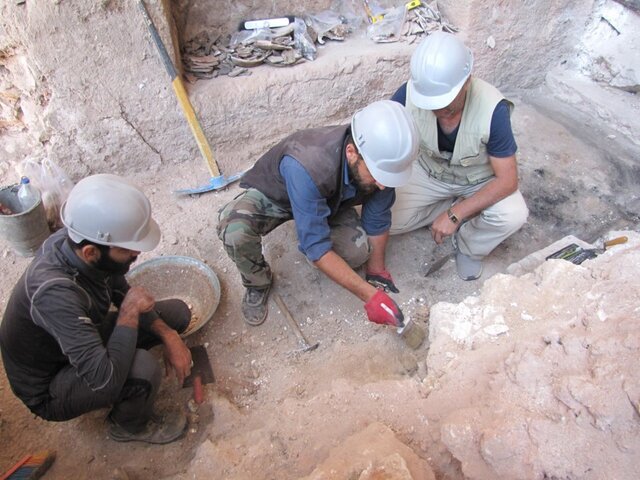Archaeological survey sheds new light on historical cave in northern Iran

TEHRAN - Recent archaeological excavations at Espahbod Khorshid, a historical cave in northern Iran, have revealed a significant Sassanian-era weapons workshop, along with evidence of metalworking and a seal bearing inscriptions in the ancient Pahlavi script, to name a few.
The findings were announced following an interdisciplinary study of the materials uncovered during the dig, ISNA reported on Monday.
Mehdi Abedini Araqi, an archaeologist and the director of the Espahbod Khorshid Cave research project, provided details on the discovery.
He said Espahbod Khorshid, which is situated in the mountainous region of Savadkuh, within the ancient Tang-e Doab Gorge, is one of the largest natural arches in Iran and the world.
The cave, historically used as a fortress, is thought to have served as the last refuge during the reign of Espahbod Khorshid before falling to the forces of the Abbasid Caliph, al-Mansur.

Abedini Araqi added that during the first phase of the excavation on the cave's western terrace, archaeologists uncovered a weapons production workshop. “Among the discoveries was a Sassanian-era furnace used to forge weapons such as arrowheads, daggers, swords, and spears. Evidence of metalworking activities, including molds, casting sand, and metal ingots, was also found, indicating that the cave functioned as a military fortress where defenders manufactured their arms.”
In addition to the military findings, the excavation revealed artistic treasures, including a space adorned with intricate carvings depicting a Sassanian horseman, a tiger, and a horse, alongside abstract human figures. A staircase with over 20 steps connecting two levels of the cave was also discovered.

One of the most intriguing finds was a Pahlavi inscription seal, which was cleaned and is currently being studied by experts. The seal features seven distinct images, including a horse, a Simurgh (a mythical Persian bird), and a rabbit, along with Pahlavi script. The seal was found attached to a jar, suggesting that it was used in trade and may have been intended to mark goods for transportation, the archaeologist explained.
Further insights were provided by Mohammad Keshavarz Divkolaee, a member of the International Association of Mediterranean and Oriental Studies (ISMEO) and the scientific committee of the International Council on Monuments and Sites (ICOMOS) in Iran. He detailed the lab studies conducted on the archaeological materials from Espahbod Khorshid Cave, including wooden artifacts, bioarchaeological specimens, and samples of mortar, pottery, and glass.

Keshavarz Divkolaee noted that the chemical analysis of the pottery and mortar samples revealed a significant similarity in their elemental composition, with the mortar containing more gypsum compared to calcite, a characteristic also noted in the pottery, likely due to firing temperatures.
A good amalgam of natural landscape and human genius has created what modern visitors witness at Espahbod Khorshid Cave.

Some consider this cave as the latest Persian stronghold against the Arab conquerors of Persia. Access to the cave needs climbing gear and also expertise in alpinism.
Measuring 80 by 100 meters, its arched entrance is one of the largest natural arches in the world. On the left side of the cave, a four-story-high castle was built; made of stones and mortar, it is the masterpiece of architecture of its time. On the right side, numerous trenches and defensive buildings were built, all of which remained firm and intact after centuries.
AM
